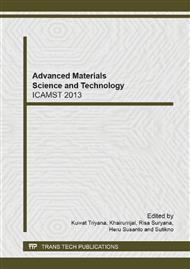p.642
p.646
p.650
p.656
p.660
p.664
p.668
p.672
p.676
Quantitative Bump Height Analysis in ENIG Using Design of Experiment
Abstract:
Flip chip technology has grown by leaps and bounds and is getting even smaller in size. Optimization of process parameters in manufacturing is eminent due to reliability issues. This paper reports the parameters that affect the quality of the bump height in electroless nickel immersion gold (ENIG) and their relationships between each other. A total of four different combinations of parameters have been carried out for this investigation using the design of experiment (DOE) approach. It can be concluded that higher temperature of electroless nickel permits an increase of bump height where as the increment in immersion gold temperature does not nessasarily affect the value of bump height. All four samples recorded a higher value of bump height than the controlled bump height value. This implies reliability of the solder joint and assembly process robustness can be improved with an increase of bump height by increasing the time.
Info:
Periodical:
Pages:
660-663
Citation:
Online since:
February 2014
Price:
Сopyright:
© 2014 Trans Tech Publications Ltd. All Rights Reserved
Share:
Citation:


